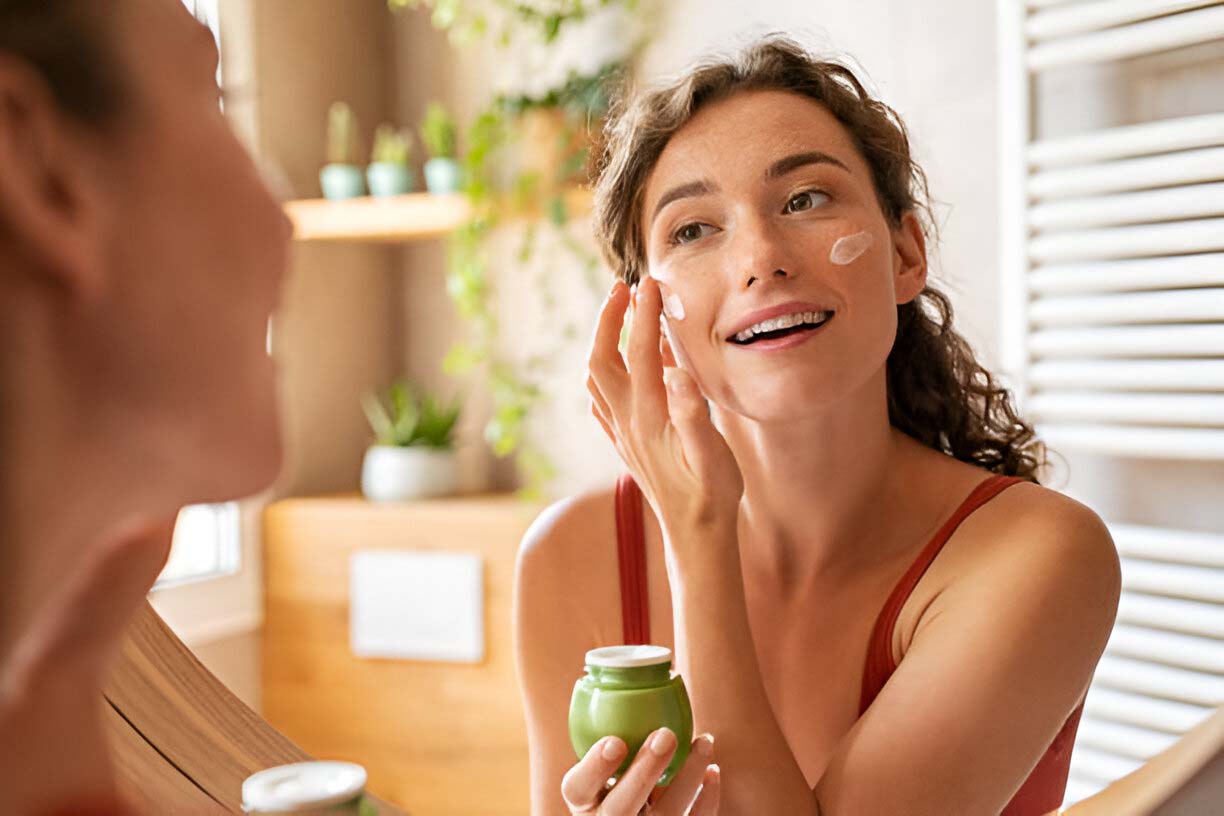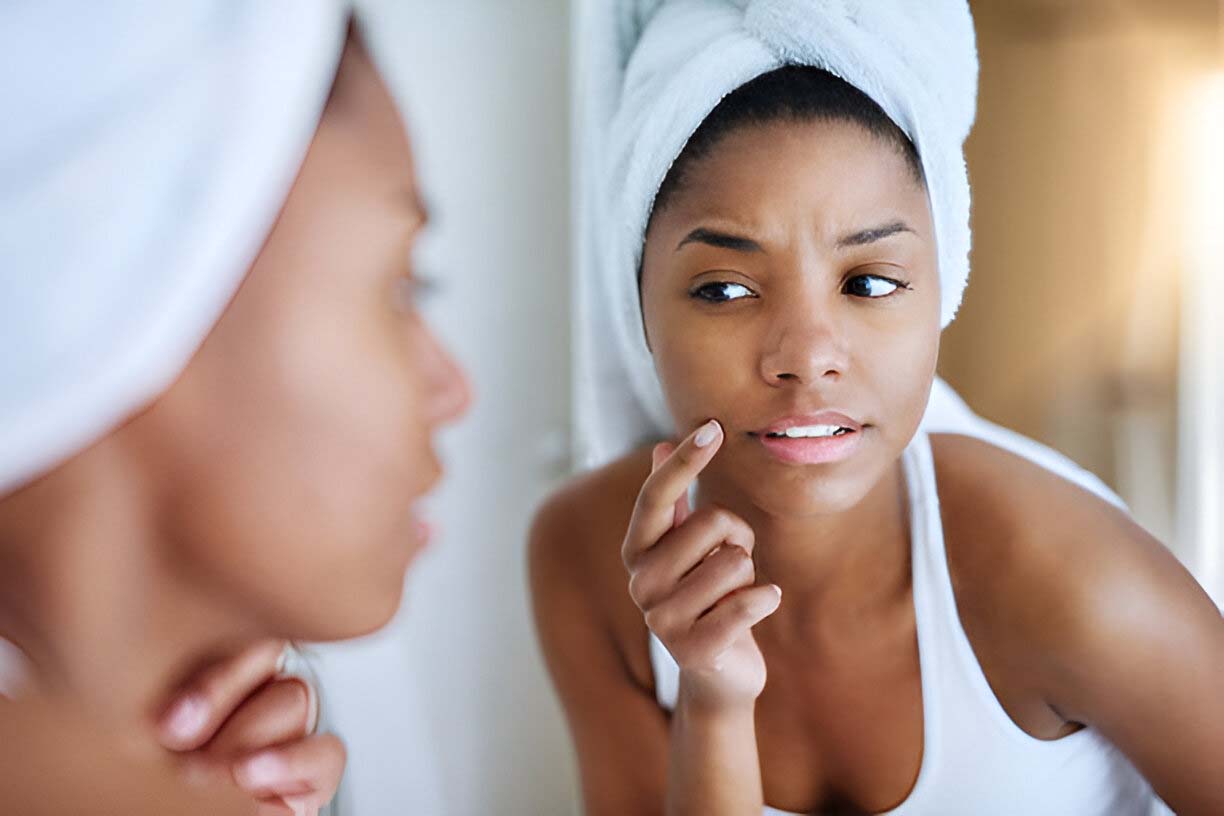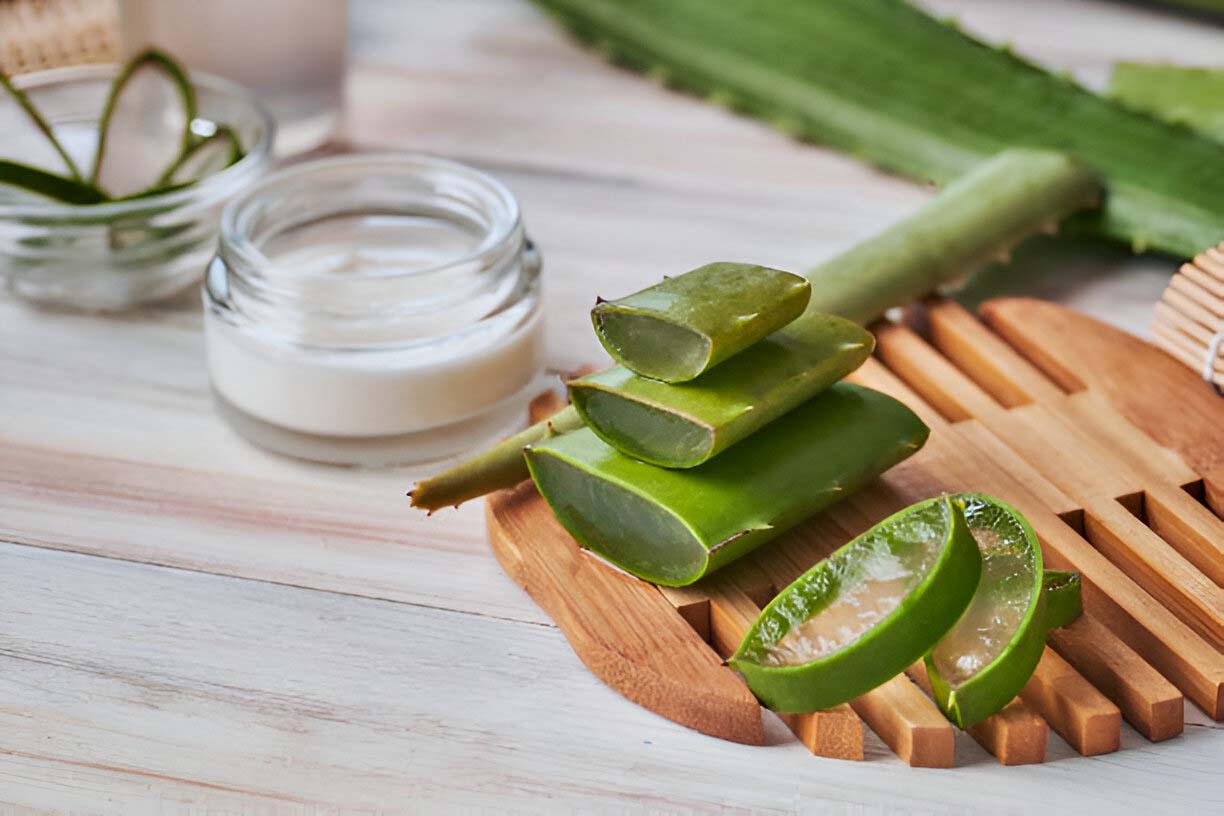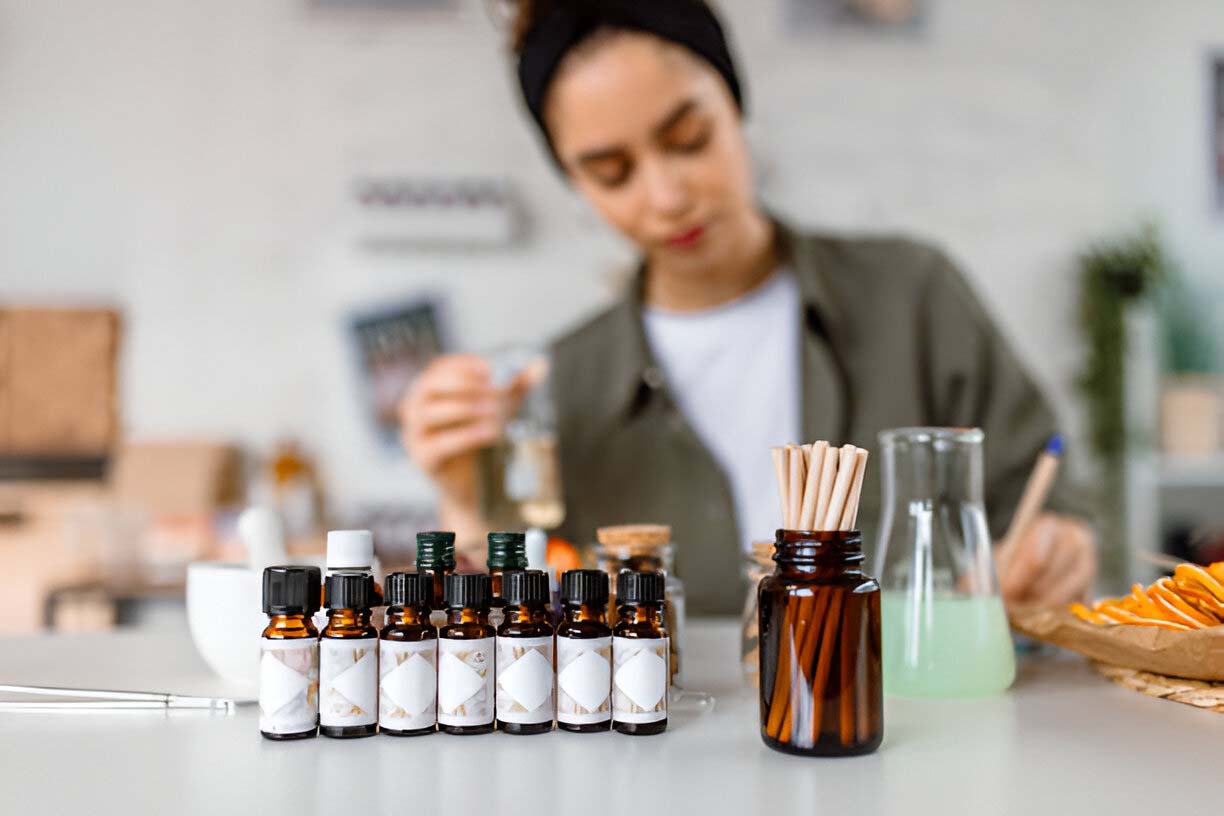Wellness Trends for 2025: A series of posts designed to uncover the most progressive concepts in wellness for the year ahead. Number Five: Non-Toxic Beauty.
As wellness becomes a more prominent aspect of daily life, people are paying closer attention to the products they use on their skin. Enter non-toxic beauty, a movement that emphasizes skincare and cosmetics free from harmful chemicals, synthetic fragrances, and ingredients with potential long-term health risks. As more consumers become aware of the ingredients in their personal care products, non-toxic beauty is reshaping the industry, offering cleaner, safer, and more environmentally friendly options for those seeking to enhance their routines without compromising health.
This guide explores the non-toxic beauty movement, covering the types of harmful ingredients to avoid, the benefits of a cleaner beauty routine, and tips for choosing safe products.

The Non-Toxic Beauty Movement: Why It Matters
Non-toxic beauty is not just about skincare—it’s a shift toward a more holistic view of personal wellness. The skin, our largest organ, absorbs much of what we apply to it, allowing chemicals to enter the bloodstream and potentially accumulate over time. With over 80,000 chemicals registered for use in consumer products, it’s no surprise that many cosmetics contain ingredients that have been flagged for toxicity, hormone disruption, or environmental harm.
The non-toxic beauty movement advocates for transparency, urging brands to disclose ingredients and eliminate harmful substances. This shift also aligns with a growing emphasis on sustainability, as many non-toxic brands prioritize eco-friendly packaging, cruelty-free formulations, and ethical sourcing.
Common Toxic Ingredients in Beauty Products
Understanding which ingredients to avoid is essential for those embarking on a non-toxic beauty journey. Here are some of the most common culprits:
Parabens: Parabens are preservatives commonly found in skincare and makeup products. Research has linked parabens to hormone disruption, as they can mimic estrogen in the body. Studies have detected parabens in breast cancer tissue, raising concerns about their long-term use.
Phthalates: Often used to make fragrances last longer, phthalates are linked to reproductive health issues and have been found to disrupt hormone function. Many non-toxic beauty brands have committed to being “phthalate-free,” making this an easier ingredient to avoid.
Formaldehyde and Formaldehyde-Releasing Agents: Formaldehyde is used as a preservative in cosmetics, but it is a known carcinogen. Some ingredients, like DMDM hydantoin and quaternium-15, release formaldehyde over time, contributing to toxicity risks.
Synthetic Fragrances: The term “fragrance” on an ingredient list can contain a cocktail of hundreds of undisclosed chemicals. Synthetic fragrances can cause allergic reactions, respiratory issues, and are often mixed with phthalates, amplifying toxicity concerns.
Sodium Lauryl Sulfate (SLS) and Sodium Laureth Sulfate (SLES): These foaming agents are commonly found in cleansers and shampoos. They can cause skin irritation and are sometimes contaminated with 1,4-dioxane, a potential carcinogen.
Triclosan: An antimicrobial agent often found in hand sanitizers and toothpaste, triclosan has been linked to hormone disruption and is known to contribute to antibiotic resistance.
Talc: Talc is used in various powder-based products. If contaminated with asbestos—a known carcinogen—talc can pose severe health risks, including cancer.
Heavy Metals (Lead, Mercury, Cadmium): Heavy metals can find their way into cosmetics through contamination, particularly in color cosmetics like lipstick. These metals accumulate in the body over time and are linked to neurotoxicity and organ damage.

The Health Benefits of a Non-Toxic Beauty Routine
Transitioning to non-toxic beauty is often motivated by health concerns, as people look to avoid long-term exposure to potentially harmful ingredients. Here are some key health benefits:
Reduced Hormone Disruption
Many toxic ingredients in beauty products are endocrine disruptors, which means they can interfere with the body’s hormone system. Avoiding these chemicals reduces the risk of hormone-related health issues, such as infertility, thyroid problems, and certain cancers.
Less Skin Irritation and Sensitivity
Synthetic chemicals, fragrances, and preservatives can cause skin irritation, especially for people with sensitive skin. Non-toxic beauty products often use gentler, natural ingredients that reduce the risk of allergic reactions and inflammation.
Lowered Risk of Chronic Illness
Avoiding carcinogens, hormone disruptors, and neurotoxins in personal care products can help minimize exposure to factors that contribute to chronic diseases. While the evidence on long-term exposure is still evolving, taking a precautionary approach aligns with wellness principles.
Environmental Benefits
Non-toxic beauty brands often focus on eco-friendly packaging and sustainable sourcing, which means that choosing these products can also reduce your environmental footprint. Ingredients like microbeads, for example, have been banned in several countries due to their environmental harm, further supporting the case for non-toxic alternatives.
How to Transition to a Non-Toxic Beauty Routine
Switching to non-toxic beauty doesn’t have to be overwhelming. Here are some tips for a smooth transition:
1. Start with High-Impact Products
Focus on replacing products that cover large skin areas or have prolonged contact, such as moisturizers, foundations, and lotions. Since these products are more likely to be absorbed into the skin, they’re a high priority for replacement with non-toxic alternatives.
2. Read Labels Carefully
Learning to read labels is essential in non-toxic beauty. Look for products that are free from parabens, phthalates, and synthetic fragrances. Many brands now carry certifications, like “EWG Verified” or “Clean at Sephora,” which indicate safer formulations.
3. Choose Fragrance-Free Options
Since fragrance blends are often undisclosed, opting for fragrance-free products can help you avoid hidden toxins. Many non-toxic products use essential oils for scent, but be mindful as these can still cause irritation for some people.
4. Look for Certifications
Certifications can offer peace of mind when selecting products. Here are some common ones:
– EWG Verified: Indicates a product meets the Environmental Working Group’s stringent safety criteria.
– USDA Organic: Products with this label contain certified organic ingredients, often free from synthetic pesticides and fertilizers.
– Leaping Bunny: Certifies that a brand is cruelty-free and does not test on animals.
5. Transition Gradually
Switching to non-toxic products all at once can be overwhelming and expensive. Transition gradually, replacing products as you use them up. This method also allows time to find alternatives that work for your skin type and preferences.

Top Ingredients in Non-Toxic Beauty
Many non-toxic beauty products emphasize natural ingredients, which offer their own unique benefits. Here are some commonly used ingredients in clean beauty products:
Aloe Vera: Known for its soothing and moisturizing properties, aloe vera is commonly used in skincare products for hydration and calming irritation.
Hyaluronic Acid: Naturally found in the skin, hyaluronic acid is a powerful humectant that draws moisture into the skin, improving hydration and plumpness.
Vitamin C: Vitamin C is a potent antioxidant that helps brighten skin, reduce pigmentation, and fight signs of aging.
Green Tea Extract: Rich in antioxidants, green tea extract helps combat free radicals, reduces inflammation, and supports skin health.
Shea Butter: Shea butter is a nourishing ingredient that provides moisture and helps protect the skin barrier, making it ideal for dry and sensitive skin types.
The Role of Brands in Promoting Non-Toxic Beauty
Brands play a significant role in the non-toxic beauty movement, and many are taking steps to promote transparency and safety in their products. Here are a few examples of brands known for their commitment to non-toxic formulations:
Beautycounter
This brand has gained attention for its rigorous ingredient selection process and commitment to transparency. Beautycounter has banned over 1,800 ingredients from its products and actively advocates for safer beauty laws.
Ilia Beauty
Known for its high-performance makeup, Ilia uses non-toxic ingredients and sustainable packaging. The brand is also transparent about sourcing, making it a favorite among clean beauty enthusiasts.
Herbivore Botanicals
Focusing on natural ingredients, Herbivore offers a range of skincare products free from synthetic chemicals. Its packaging is also fully recyclable, supporting both health and environmental sustainability.

The Future of Non-Toxic Beauty
As consumers become more educated on ingredient safety and transparency, the non-toxic beauty movement is likely to grow. Here are a few trends that may shape the future of this growing wellness trend:
Increased Ingredient Transparency
With pressure from consumers and advocacy groups, more brands may begin disclosing full ingredient lists, including fragrance components, allowing consumers to make informed choices.
Rise of Biodegradable Packaging
To reduce waste, clean beauty brands are investing in sustainable packaging, from compostable materials to refillable containers, further aligning with eco-conscious values.
Artificial Intelligence for Ingredient Safety
AI is being used to analyze ingredient safety and toxicity. By analyzing vast amounts of data, AI can identify patterns and risks associated with specific ingredients, aiding brands in developing safer formulations.
Expanded Clean Beauty Standards
As non-toxic beauty becomes more mainstream, organizations like the Environmental Working Group (EWG) and regulatory bodies may establish clearer standards, creating a more unified approach to clean beauty.
Embracing Non-Toxic Beauty for a Healthier Future
Non-toxic beauty isn’t just a trend; it’s a long-term shift toward prioritizing health, transparency, and sustainability in personal care. By choosing products free from harmful chemicals and supporting brands committed to safe and ethical practices, consumers are reclaiming control over what they put on their skin. This movement aligns with a larger cultural focus on wellness, where health isn’t limited to diet and exercise but extends to every product we use in our daily routines.
The journey to a truly clean beauty routine may take time and effort, but the benefits—improved skin health, reduced exposure to potentially harmful substances, and a positive impact on the environment—make it a rewarding pursuit. As awareness grows and technology advances, the beauty industry will likely continue to evolve, offering safer, more effective, and environmentally conscious options for everyone. Embracing non-toxic beauty means choosing to care for our bodies and our planet, one product at a time.








